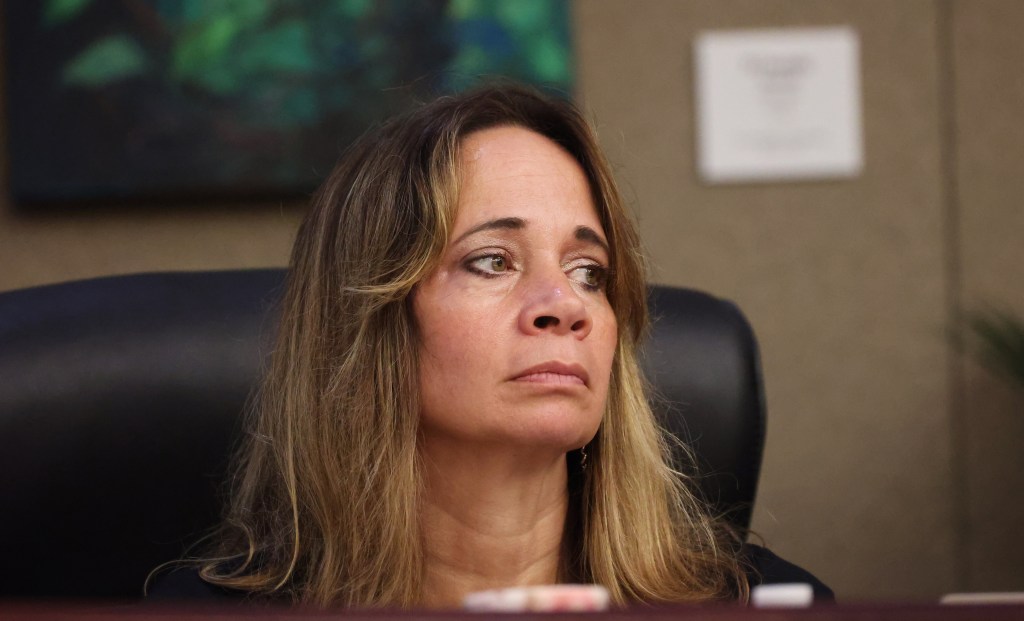Despite intense lobbying from a cohort of Winter Park leaders, including its mayor, Orange County’s elected governing board on Tuesday adopted a new map of commission districts that lumps the wealthy and influential city with rural east communities — where its political power may be diminished.
But the decision was good news for many in Pine Hills, an unincorporated, low-income, heavily Black and Hispanic area that is split by the county’s existing map and preferred an alternative new district that both united the neighborhood and separated it from Winter Park.
The board’s 5-2 majority in favor of what was dubbed “Map 7B” included Commissioner Kelly Martinez Semrad, who retains a district similar to her current one with Winter Park and rural east Orange combined. Semrad lives in east Orange, and defeated a former Winter Park mayor last November to gain her seat.
Commissioners were required to rejigger the boundaries of commission districts after county voters narrowly approved a charter amendment last year to expand the board from six to eight elected seats, a measure intended to add voices to local government decisions.
“The foundational role, the primary role of this board is to represent unincorporated Orange County,” said Semrad, admitting she was torn by competing interests. “Municipalities have their own government…The only layer of government our unincorporated areas have is this board.”
Her vote aligned with views of Save Orange County, Inc., the grass-roots organization for which she previously served as vice chair and which has vigorously opposed Sustanee and other mega-developments in rural east Orange. The group peppered the board with hundreds of emails over the weekend and Semrad cited many of its arguments while explaining her decision to choose Map 7B.
Save Orange County’s emails argued that the other “finalist map,” known as 1A, placed the traditional boundary between urban and rural services, the Econ River, in a new District 8, which the group described as “a high-growth district, thereby opening the door to accelerated development east of the river. Once growth extends beyond the Econ, it becomes exceedingly difficult to contain, effectively nullifying voter intent.”
Orange County voters overwhelmingly voted last year to set a rural boundary.
Orange voters demand rural protection against sprawl, make changes to commission elections
Orange County’s mayor also is a voting member of the county commission. Mayor Jerry Demings voted with the majority.
Commissioner Christine Moore, whose district includes Apopka, Lockhart and part of Pine Hills, and commissioner Mayra Uribe, whose district includes Belle Isle, Conway and SoDo, cast no votes against Map 7B.
An appointed advisory panel of 15 people suggested both options, without endorsing one over the other. They met 20 times over seven months in public meetings, and weighed about 30 maps, most drafted by panel members using mapping software provided by the county.
The panel was guided by an assistant county attorney to ensure it followed federal and state laws and avoided gerrymandering, a word coined to describe the deliberate manipulation of electoral boundaries to provide a partisan advantage to a political party or a class of citizens.
An additional goal of the redistricting is to rebalance Orange County’s population between commission districts so that no commissioner represents substantially more citizens than other commissioners. The principle, anchored in court rulings, is known as the “one person, one vote” rule.”
Where does Winter Park fit in Orange County’s redrawn commission districts?
Nearly 70 people signed up to speak on the maps at Tuesday night’s commission meeting, including six Winter Park officials, who all pushed for Map 1A. That map would have removed the city from District 5 and put it in a new District 7 with Pine Hills and also the municipalities Eatonville and Maitland.
All speakers were limited to a minute in front of the board.
“Both proposed maps keep Pine Hills whole, and that’s the right call,” Winter Park Commissioner Craig Russell said during the public comment period. “But 1A goes further. It also puts [together] Winter Park, Maitland and Eatonville, who have historic, cultural and economic ties that should not be fractured. Our communities are already collaborating in drainage and lake management and transportation, planning and public safety initiatives. These are all regional challenges and demand a unified voice at the county level.”
Winter Park leaders argued they had little in common with rural east communities.
Eatonville and Maitland also endorsed Map 1A.
But a majority of those who took the public microphone Tuesday favored 7B.
Jasmine Burney-Clark, founder of a statewide voters’ rights organization headquartered in Orlando, said that map “truly serves the people, not special interests or a select municipal government,” a jab at Winter Park.
“Under Map 1A, some of the residents risk having their voices diluted by affluent and established municipal power,” she said, characterizing the concerns of some Pine Hills residents. “While under 7B, it offers more unified representation. It gives residents stronger voices ensuring that the commissioner who is representing their district can focus on addressing the disparities that exist.”
shudak@orlandosentinel.com

